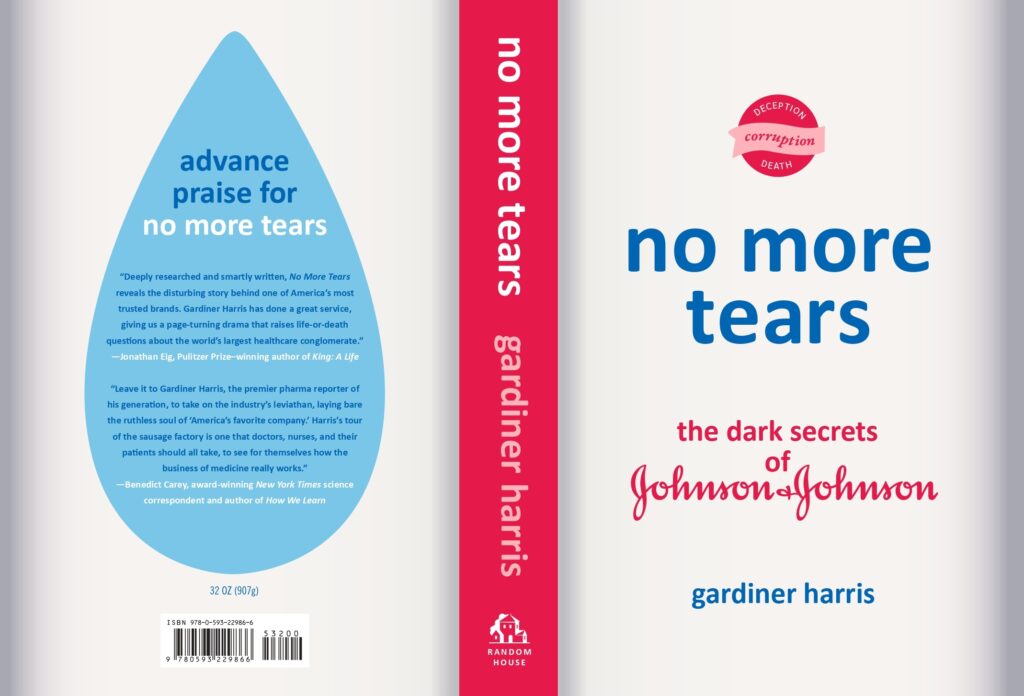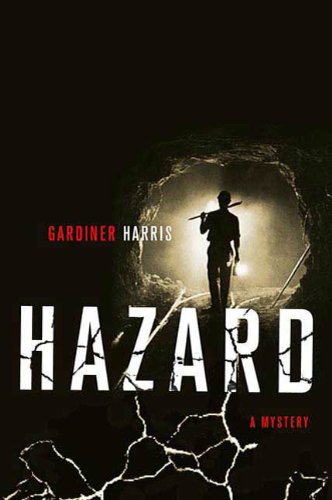
About Gardiner Harris
Gardiner Harris previously served as the public health and pharmaceutical reporter for The New York Times and is now a freelance investigative journalist. He also served as a White House, South Asia, and international diplomacy reporter for the Times. Before that, he was a reporter for The Wall Street Journal, covering the pharmaceutical industry. His investigations there led to what was then the largest fine in the history of the Securities and Exchange Commission.
 An explosive, deeply reported exposé of Johnson & Johnson, one of America’s oldest and most trusted pharmaceutical companies—from an award-winning investigative journalist.
An explosive, deeply reported exposé of Johnson & Johnson, one of America’s oldest and most trusted pharmaceutical companies—from an award-winning investigative journalist.
Previously, he was the Appalachian reporter for The Courier-Journal of Louisville, Kentucky. He won the Worth Bingham Prize for investigative journalism and the George Polk Award for environmental reporting after revealing that coal companies deliberately and illegally exposed miners to toxic levels of coal dust. Harris’s novel, Hazard, draws on his experience investigating these conditions. He has also been a Pulitzer Prize finalist with a team of others at the Times. He lives in San Diego, California.
Truth is the job Impact is the mission.
Gardiner Harris has reported from the White House and the world’s slums, winning some of journalism’s top awards. For over 30 years, he’s written for outlets including The New York Times, The Wall Street Journal, and The Courier-Journal, holding powerful institutions to account and giving voice to those ignored.
Coal Mines & Consequences – Kentucky Bureau Chief
- Exposed rigged coal dust tests across Eastern Kentucky.
- Revealed mines owned by Governor Paul Patton were among the offenders.
- Led to a rewrite of Kentucky’s coal mine safety laws and federal reform.
- Faced death threats while investigating.
Big Pharma Exposed – WSJ & NYT Reporter
- At The Wall Street Journal, uncovered fraud at Bristol-Myers Squibb—resulting in federal prosecutions.
- At The New York Times, exposed how:
- Academic doctors were secretly paid by pharma.
- Dangerous drugs were marketed despite internal safety concerns.
- Work led directly to the Physician Payments Sunshine Act.
Global Impact – New Delhi Correspondent
- First journalist to quantify India’s air pollution crisis
- Coverage prompted massive environmental reforms and toilet-building campaigns across rural India.
- Blacklisted by the Indian government—press credentials revoked.
White House & Diplomatic Beat – NYT Washington Bureau
- Covered diplomacy, public health policy, and presidential politics.
- Left daily journalism in 2019 to pursue longform investigative writing.
A Journey Through Words
Twenty years ago, I sat at an airport bar and met a Johnson & Johnson sales rep whose wrenching story changed my perspective forever.
From a Story to a Movement
That conversation led me to investigative reports that exposed hidden truths, influencing federal law changes and impacting countless lives.
Coming Soon: April 8, 2025
The journey comes full circle as the book is set to release, shedding light on a story that needed to be told.


Twenty years ago, I sat at an airport bar and met a Johnson & Johnson sales rep whose wrenching story changed my perspective forever.
From a Story to a Movement
What begins as a tragic accident in the coal mines unravels into a tale of corruption, power, and survival. As Amos Blevins and Will Murphy fight for the truth, their struggle becomes more than just a search for justice—it sparks a movement. In the depths of the mines, where lives are shaped by coal, one story has the power to change everything.
A Literary Milestone: March 16, 2010
The journey comes full circle as the book is set to release, shedding light on a story that needed to be told.
Hazard Book Article
by Gardiner Harris ‧ RELEASE DATE: March 16, 2010

A fatal incident in a Kentucky coal mine triggers a layered and challenging probe.
When a wall in the Blue Gem Mine gives way, veteran miner Amos Blevins watches helplessly as Rob Crane is trapped by an onrush of water. Amos tries desperately to save his young co-worker, but Rob becomes one of nine casualties in the disaster. At a nearby hospital, former miner Will Murphy, now an Inspector for the U.S. Mine Safety and Health Administration, questions James Benedetto, a young miner Amos was able to save. The walls of the hospital are lined with plaques and framed newspaper articles commemorating past accidents, one of which caused the death of 25-year-old Jeff Murphy and left older brother Will with third-degree burns on 60 percent of his body. Working with Kentucky State Police Detective Gene Freeman, Will questions the rescue team, including honorable Amos, who’s tortured by his failure to save Rob—and, the reader learns, not entirely truthful in his answers. These interviews leave Will dissatisfied, and his unease is only deepened by encounters with the mine owners’ dismissive, evasive representatives. Amos’ internal struggle is set against Will’s initially measured investigation. Determination to learn the truth spawns a recklessness that nearly gets Will killed, but he perseveres through a tangle of deception.